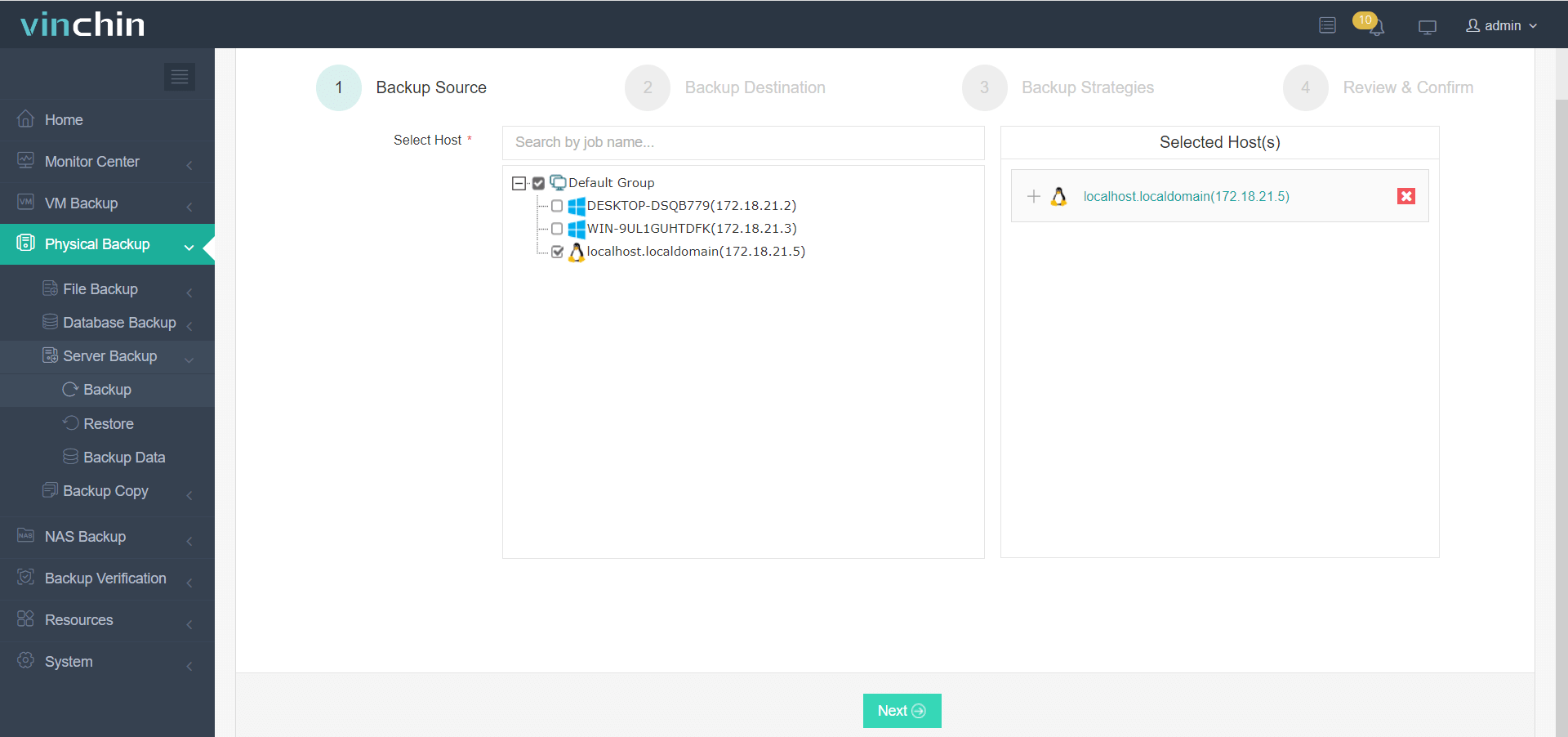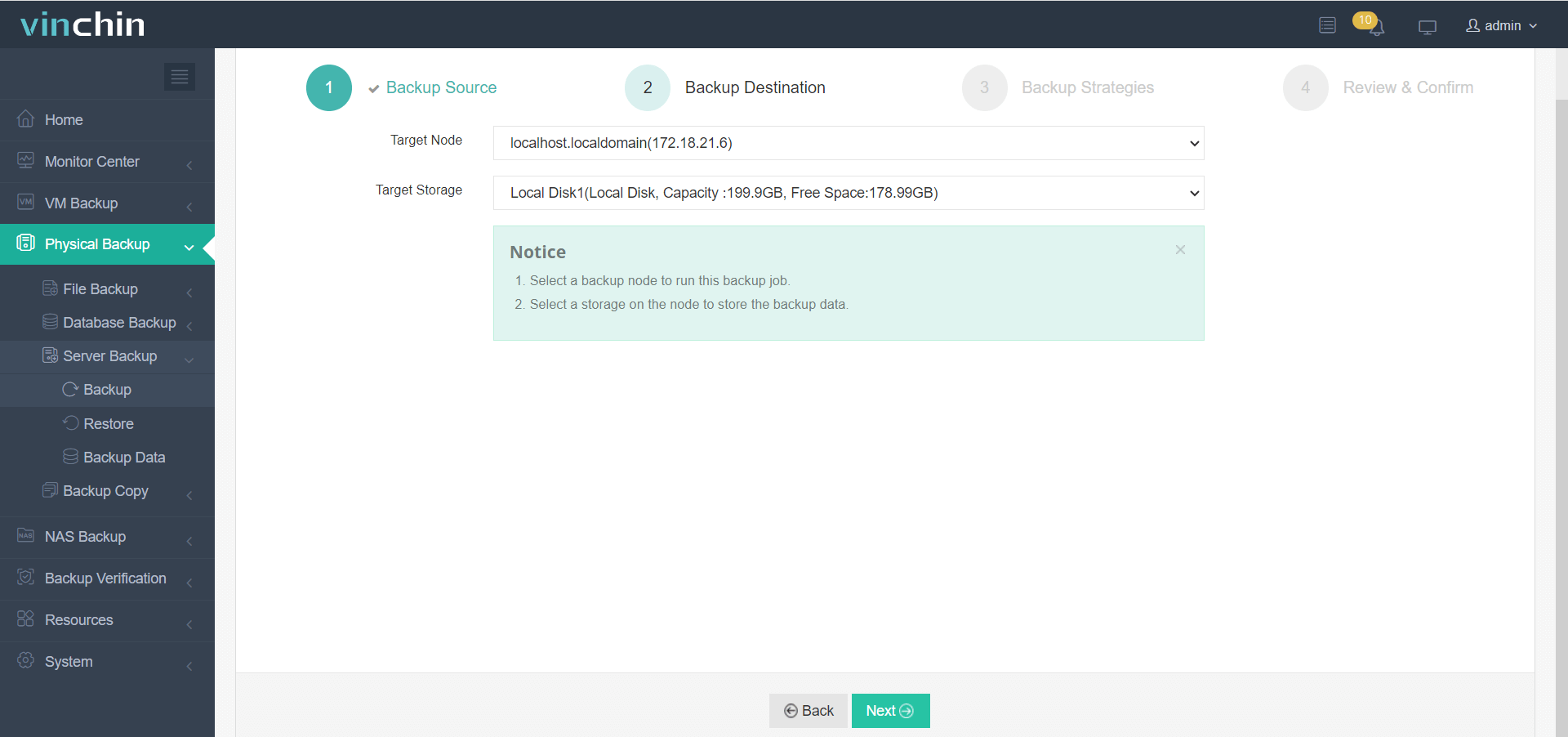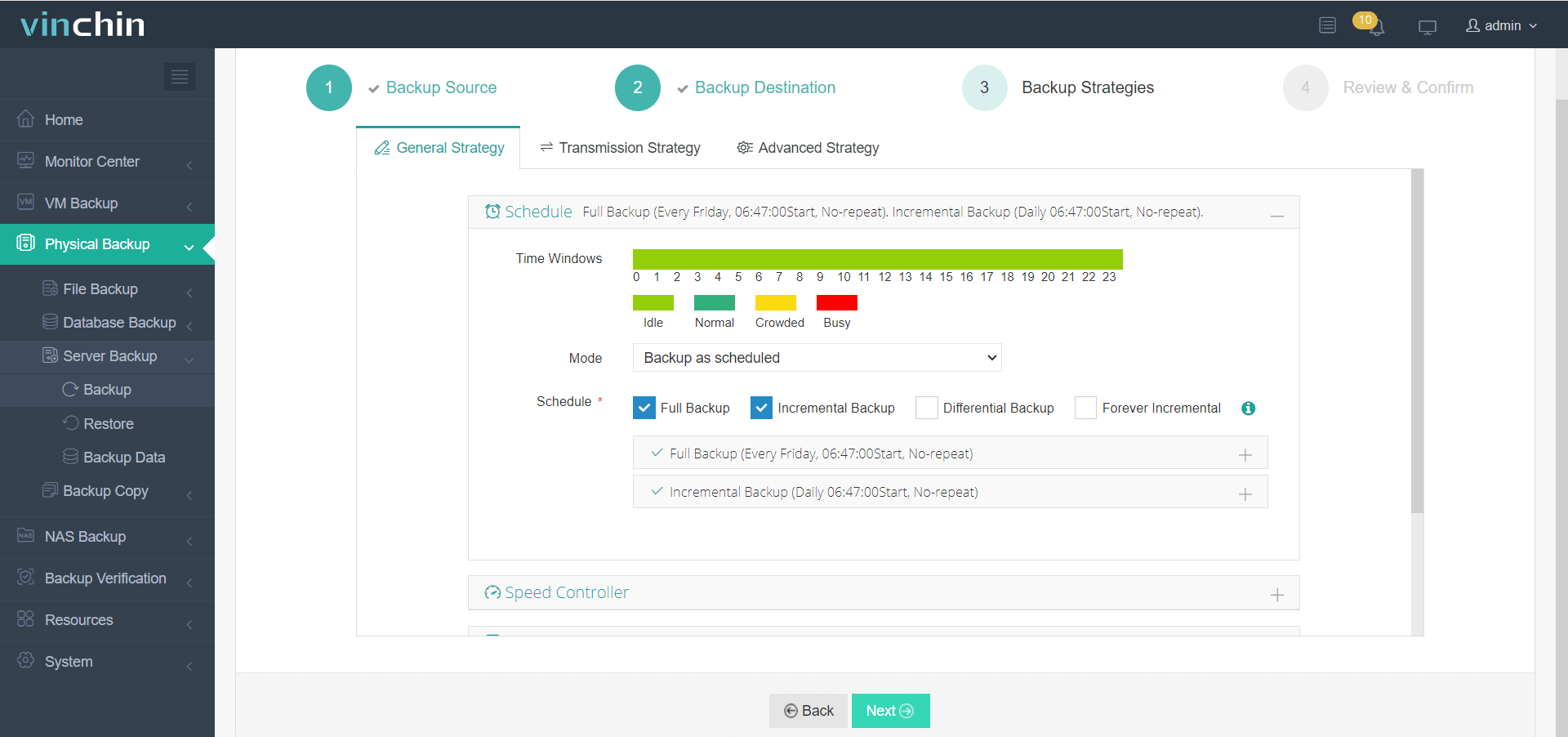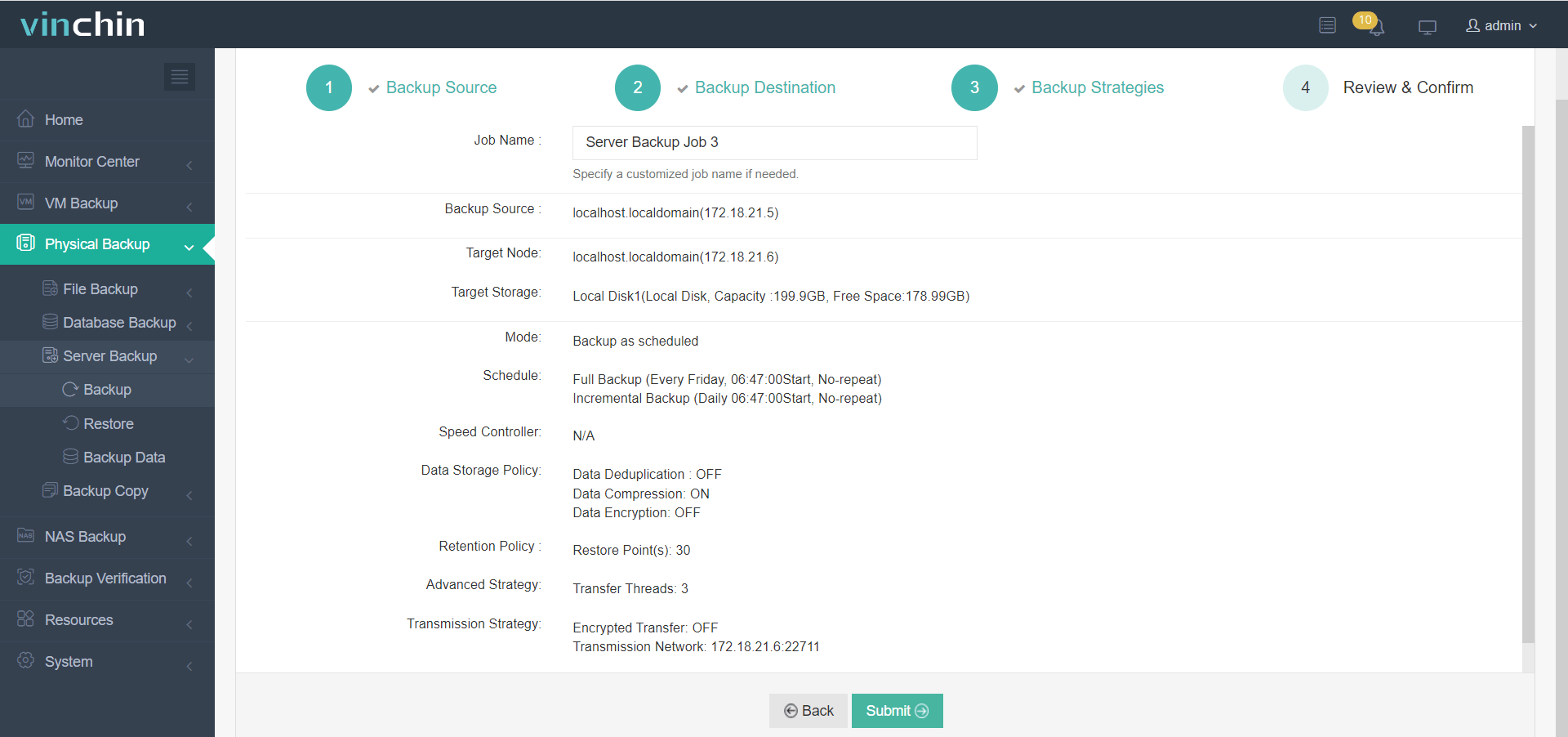-
Why backup Linux server to tape?
-
How to backup Linux server to tape with tar commands?
-
How to backup Linux server to tape with Vinchin?
-
Linux server backup to tape FAQs
-
Conclusion
Tape backup remains a pillar of enterprise data retention for Linux servers. It provides offline, air-gapped copies that resist cyber threats and hardware failures. Modern Linear Tape-Open (LTO) technology delivers multi-terabyte capacity in a small form factor. With straightforward Linux tools and scripting, you can build an automated, reliable tape archive. In this article, we cover why tape still matters, walk through command-line workflows from basic to advanced, and show how Vinchin’s web console streamlines tape and disk backups—all in clear, concise steps.
Why backup Linux server to tape?
1. Modern tape libraries deliver up to 18 TB per cartridge, fitting vast data into compact racks.
2. Tape sits offline when idle, creating an air-gap that thwarts ransomware and network attacks.
3. Energy use occurs only during read/write, cutting power costs versus spinning disks.
4. By following the 3-2-1 rule, you keep three data copies on two media types, one offsite—ideal for disaster recovery.
5. High-quality tapes and regular drive cleaning prevent read/write errors, boosting archive reliability.
6. Label tapes with barcodes and maintain an on-disk catalog for quick content lookup without loading the tape.
7. Encrypt data before writing—hardware encryption on LTO-6+ or tools like age protect sensitive archives.
8. Routine checks with checksums ensure data integrity after backup and before tape unload.
How to backup Linux server to tape with tar commands?
Below is a step-by-step workflow overview. We start with device prep, move to writing and verification, then cover advanced tape control and alternative LTFS.
Workflow Overview
1. Identify and clean the tape device.
2. Load and rewind tape.
3. Create full or incremental archives with tar.
4. Verify data with checksums and tar -t.
5. Automate error handling in scripts.
6. Manage multiple cartridges and catalogs.
7. (Advanced) Use Linear Tape File System for random access.
1. Identify and Check Device Status
List all tape drives:
ls -l /dev/st*
Most systems expose /dev/st0 (rewinds on close) and /dev/nst0 (no-rewind).
View status and error counts:
tmt -f /dev/st0 status
This shows current filemarks, block size, and any I/O errors.
2. Clean and Load Tape
Clean drives as per vendor’s schedule to avoid read/write failures.
Rewind and load tape:
mt -f /dev/st0 rewind mt -f /dev/st0 load
Use /dev/nst0 for scripts to prevent unwanted rewinds during long writes.
3. Write Full and Incremental Backups
Full backup
bashCopyEdittar -czf /dev/nst0 /etc
Flags: -c create, -z compress, -f file.
Incremental backup
First run a snapshot:
tar --listed-incremental=/var/backups/snapshot.file \ -czf /dev/nst0 /home
This writes only files changed since the last snapshot.
4. Verify Backup Integrity
After writing, capture a checksum of the archive stream:
mt -f /dev/nst0 rewind dd if=/dev/nst0 bs=64k count=1M | sha256sum > /var/backups/tape.sha256
Compare later by replaying the stream:
mt -f /dev/nst0 rewind dd if=/dev/nst0 bs=64k count=1M | sha256sum -c /var/backups/tape.sha256
This detects bit-level errors before off-site transport.
5. Error Handling in Scripts
Always check exit codes in your cron scripts:
tar -czf /dev/nst0 /var && \ echo "Backup succeeded" || \ echo "Backup failed with code $?" | mail -s "Tape Backup Alert" ops@example.com
Capture non-zero $? especially during long runs.
6. Managing Tape Sets and Catalogs
For multi-tape backups, span archives and tag each tape:
tar -M -L 1024M -czf /dev/nst0 /var/log
Use -M for multi-volume and -L to limit per volume.
Keep an on-disk table-of-contents (TOC) per tape:
tar -tvf /dev/nst0 > /backups/tape1.toc
Archive TOCs separately to a dedicated catalog tape.
7. Advanced Tape Control Commands
Skip filemarks:
mt -f /dev/nst0 fsf 1
Skip backward:
mt -f /dev/nst0 bsfm 1
Erase full tape:
mt -f /dev/nst0 erase
Unload tape:
mt -f /dev/nst0 offline
These commands let you script custom navigation and cleaning.
Copy files directly:
LTFS simplifies restores without full-archive extraction.
8. Alternative: Linear Tape File System (LTFS)
LTFS mounts tape as a filesystem for random file access. Install on RHEL/CentOS:
yum install ltfs mkfs.ltfs --device /dev/nst0 --mount-point /mnt/tape mount -t ltfs /dev/nst0 /mnt/tape
Copy files directly:
cp /var/log/* /mnt/tape/ umount /mnt/tape
LTFS simplifies restores without full-archive extraction.
How to backup Linux server to tape with Vinchin?
To bridge manual and enterprise needs, consider Vinchin. Vinchin is a professional, enterprise-grade backup solution supporting most mainstream Windows and Linux operating systems—including Windows, Ubuntu, RHEL, SLES, Rocky Linux, Oracle Linux, Debian, and more.
It provides real-time protection (CDP), continuously replicates data to a standby machine, monitors system heartbeat, and automatically fails over to the standby if the primary goes down—later synchronizing data back when the original returns to health. Vinchin also lets you configure various backup policies when creating standard jobs—such as forever incremental backup, throttling policy, data compression and deduplication, Changed Block Tracking, and more—and supports instant restore and migration of data disks.
The Vinchin web console makes physical machine backups fast and clear:
1. Select the Linux server to backup, such as a database server you rely on

2. Select backup storage, picking tape or disk target that suits your retention needs

3. Select backup strategies, choosing settings that match your RTO and RPO goals

4. Submit the job, then monitor its progress in a unified dashboard

Each step ties directly to the server you protect, ensuring your policy fits the workload. Vinchin serves a global customer base with top product ratings and offers a 60-day full-featured free trial—click the button to get the installer and deploy effortlessly.
Linux server backup to tape FAQs
Q1: How do I check device and tape health before backup?
Use mt: mt -f /dev/st0 status and run mt -f /dev/st0 clean per vendor guide
Q2: How can I automate tape rotation and logging?
In crontab, schedule a script that uses date +%Y%m%d for filenames, logs to /var/log/tape-$(date +%F).log, and emails on errors
Q3: How do I restore a single file from a multi-tape backup?
Rewind: mt -f /dev/nst0 rewind; skip to tape N: mt -f /dev/nst0 fsf N; then tar -xzf /dev/nst0 path/to/file
Conclusion
Linux tape backup offers cost-effective, high-capacity storage that can be more economical than disk alternatives. With proper maintenance, LTO tapes can retain data reliably for 30 years or more. Offline, air-gapped tape archives protect against cyber threats and ransomware by disconnecting once written. Administrators can automate full and incremental backups using simple tar and mt scripts, then verify data integrity with checksums. Modern LTO drives reach up to 18 TB per cartridge, fitting massive enterprise archives into compact racks.
Vinchin’s enterprise-grade backup platform adds centralized management for tape and disk workflows with real-time replication and automated failover.
Share on:







